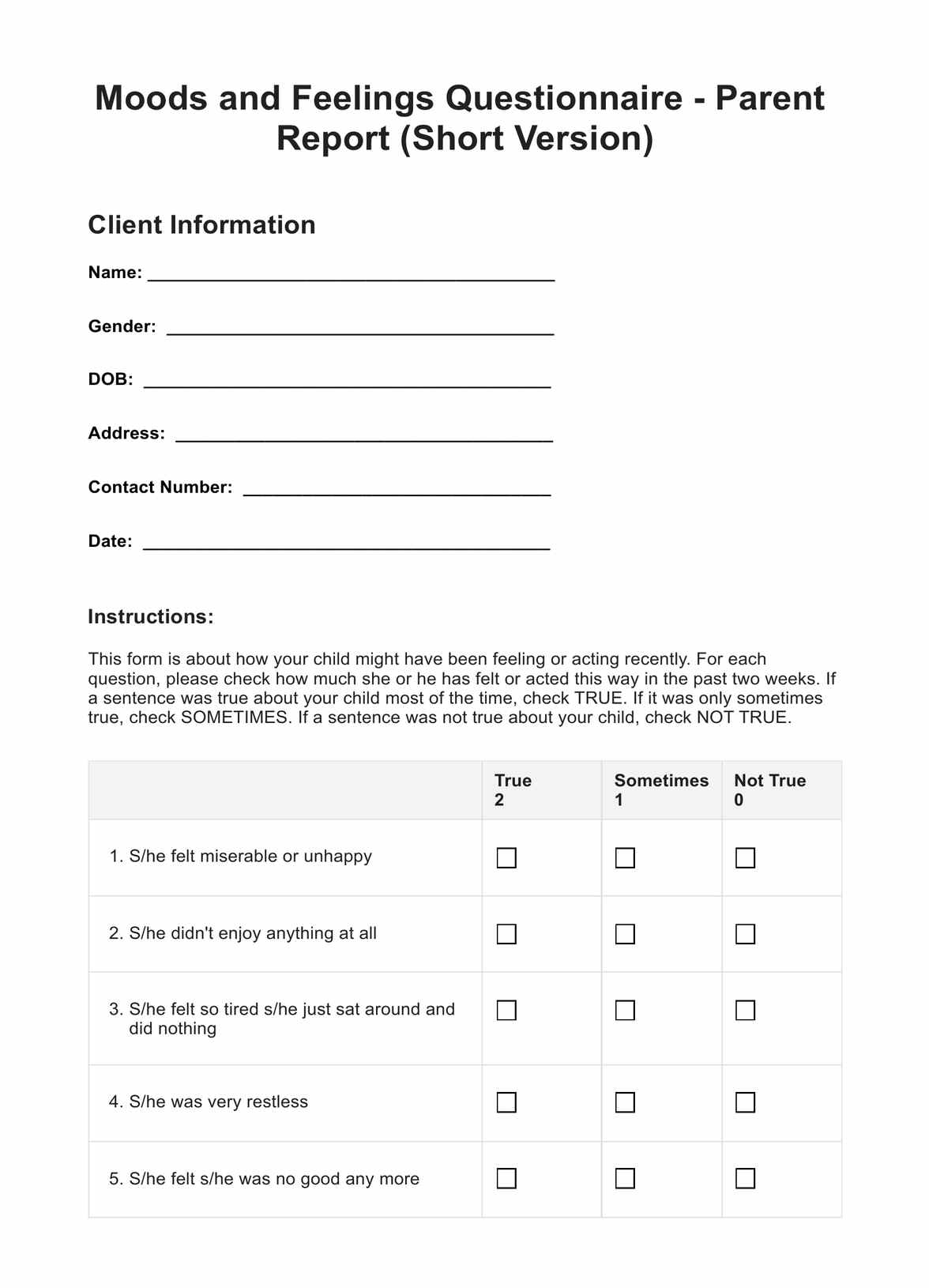This questionnaire is designed for parents, caregivers, and healthcare professionals who interact closely with children aged 6 to 17. It is particularly useful for mental health assessments, pediatric check-ups, and early intervention.

Moods and Feelings Questionnaire - Parent Report (Short Version)
Assess emotions with Moods and Feelings Questionnaire: Evaluate feelings in a comprehensive tool for insights.
Moods and Feelings Questionnaire - Parent Report (Short Version) Template
Commonly asked questions
The questionnaire offers early detection of emotional concerns, facilitates holistic assessments, provides objective insights for communication with professionals, enables tailored interventions, tracks progress over time, and promotes collaborative care among parents and healthcare providers.
The frequency of administration depends on the specific needs and circumstances. It can be used for regular check-ins, initial screenings, during significant life events, transitions, or whenever a change in the child's emotional state is noticed.
EHR and practice management software
Get started for free
*No credit card required
Free
$0/usd
Unlimited clients
Telehealth
1GB of storage
Client portal text
Automated billing and online payments











